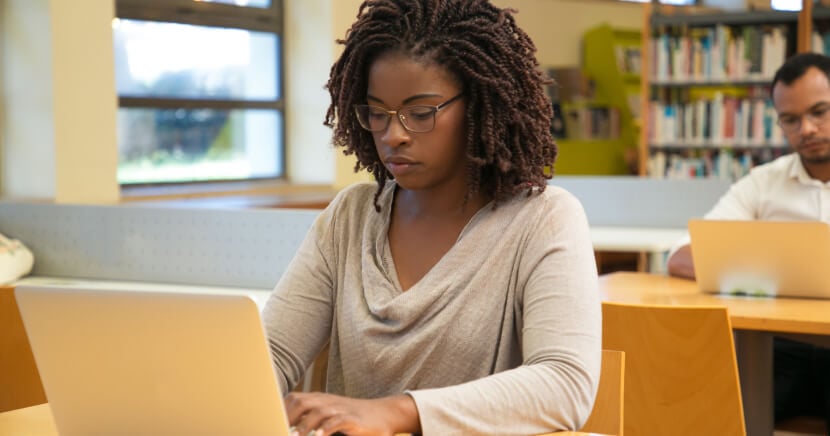Happy New Year!
As we look toward 2025 and beyond, public libraries are poised to build on trends that have been shaping the field for years. Unless an innovation as disruptive as artificial intelligence emerges in the next year, the developments we anticipate will likely reflect the ongoing evolution of library services in response to changing community needs, emerging technologies, and a growing focus on sustainability and inclusion. For library professionals, this means staying agile and forward-thinking while leveraging established frameworks to adapt and innovate.
From the continued integration of digital tools and platforms to a deeper emphasis on environmental stewardship and community engagement, libraries are transforming how they deliver services and connect with patrons.
These changes are not just reactions to current challenges but are part of a broader effort to redefine the library’s role in a rapidly evolving world. By examining these emerging and ongoing trends, library professionals can prepare to lead their institutions into a future where relevance and impact remain at the core of their mission.
See also:
-
Digital transformation and New Year's resolutions for the modern public library
-
Attracting new patrons, engaging existing ones and creating the libraries of the future
-
Four library technology trends shaping the future of public libraries
Reaching beyond traditional patrons
In a recent GovInsider article on library technology, Iain Finlayson, Managing Director of Libraries and Education Solutions at Civica, emphasized that digital transformation can help libraries extend their services beyond their traditional audience.
This means not only catering to typical users such as students but also creating services that reach individuals from lower socioeconomic backgrounds or older adults.
“How do we engage with those people? How do you bring them into the library and make them feel that the library is a place for them as well?” he asks. For example, the Library of Things Network in Australia enables communities to borrow and lend a variety of items beyond books, including tools like lawnmowers and pressure washers.
Teaching media literacy to underserved communities
As we highlighted in a previous blog post on how libraries and intellectual freedom foster informed and engaged citizens, libraries serve as gateways to knowledge and culture — accessible to everyone, not just a privileged few, but to all members of society.
At PressReader, we firmly believe that media-literacy education is essential for the well-being of all citizens in a democratic society. This need is particularly pronounced for individuals from underserved or underrepresented groups, including refugees, migrants, people with disabilities, and members of the gay or transgender communities. It also extends to older adults, individuals experiencing homelessness, and those with limited access to digital resources.
Media literacy equips people with the skills to critically evaluate and interpret the media they engage with. This skill is especially vital for marginalized communities, who are often disproportionately exposed to biased or harmful content.
Through media-literacy education, individuals can learn to challenge hate speech and actively participate in the media landscape, transforming from passive consumers into empowered contributors.
Partnerships between libraries and media outlets

While we're on the topic of media literacy, a recent article in the Texas Standard explored the growing prevalence of partnerships between libraries and news organizations.
For some in leadership roles within libraries or newsrooms, partnerships between the two seem like a natural fit. Jo Giudice, who recently retired as director of the Dallas Public Library, described librarians and journalists as closely aligned in their missions.
“Our goals are the same: really elevating facts, and teaching people how to tell fact from fiction,” she explained. “Media literacy is big for both of us. And I think that’s probably the core of our partnership.”
Ling Hwey Jeng, a professor of information studies at Texas Woman’s University, offered another perspective on why journalists are eager to collaborate with libraries.
“Trust is what makes the libraries and the librarians the best,” she said. “There is no other agency that has this kind of trust.”
Trustworthy and reliable information
Research supports this view. A 2017 Pew Research poll revealed that about 8 in 10 adults believe libraries help them access trustworthy and reliable information. Another Pew study from the same year showed that more adults place their trust in libraries than in news outlets.
This high level of public trust positions libraries as ideal spaces for journalists to connect with their audiences. Tom Huang, the assistant managing editor at The Dallas Morning News, led efforts to collaborate with the local library system. He sees libraries as essential allies in keeping journalism relevant in a rapidly changing world.
“I’ve always said newsrooms can’t afford to be the traditional ones where we’re closed off from the community,” Huang told the Texas Standard. “But that’s a lot of hard work. And, since libraries have largely figured that out, why not partner with the libraries to do that?”
Offering assistance to displaced persons
In November of 2024, IFLA published its Guidelines for Libraries Supporting Displaced Persons.
It couldn't have come at a more appropriate time, with the world facing the largest global refugee crisis since the Second World War due to a number of causes, including armed conflict, climate change, and pandemics like COVID-19."
IFLA makes the case that libraries are ideally poised to help out:
Libraries play a crucial role as trusted community spaces and welcoming sanctuaries for all, regardless of the displacement or limbo state people might find themselves in, and no matter what kind of intersectional vulnerability they may face at the same time, like gender identity, childhood, third age, or disability.
Libraries serve as safe havens that support the integration of displaced individuals into host communities while fostering mutual understanding between these groups. They uphold their core mission to welcome and serve all cultures, traditions, and languages, contributing to social cohesion and peaceful coexistence in multicultural societies.
In addition to empowering displaced individuals and safeguarding human rights, libraries play a crucial role in preserving cultural memory and heritage, benefiting both host and origin communities. By promoting cultural understanding and positive social interaction, they help build inclusive societies that respect the dignity and rights of all individuals.
IFLA's guidelines include the following suggestions:
-
Provide materials to displaced individuals so that they can receive information in their origin languages.
-
Create a list of free medical clinics in your area to be used by anyone who does not have access to the healthcare system.
-
Gather as much information as possible about relevant services and how displaced persons can access them.
-
Arrange library tours for displaced persons with interpreters in their origin language to explain how the library can help them.
Expanded digital resources support lifelong learning

Libraries play a crucial role in lifelong learning, offering resources for personal and professional growth. They provide access to books, technology, and workshops, serving as community hubs where people from all backgrounds can learn and develop new skills.
Modern libraries leverage digital transformation to enhance their own library resources and services, including expanded digital collections like eBooks, audiobooks, and platforms such as PressReader, which grants access to thousands of newspapers and magazines.
Libraries also use online catalogs, e-learning platforms, and virtual events to promote accessibility and convenience. Digital literacy programs teach patrons safe and responsible online behavior, while technologies like RFID and data analytics improve efficiency and decision-making.
Mobile apps provide on-the-go access to library services, and collaborations with educational institutions support community learning. Many libraries digitize archives to preserve and share historical materials, ensuring their accessibility for future generations.
Shining a spotlight on sustainability
In 2025 and beyond, expect public libraries to emphasize sustainability, leveraging their resources to educate and inspire patrons to create a more sustainable future. Here’s how libraries can foster environmental stewardship:
Curated collections
Libraries can feature materials on climate change, conservation, and sustainability, supported by displays that highlight these topics and engage patrons.
Green practices
By adopting energy-efficient lighting, recycling programs, and water conservation measures, libraries can reduce their environmental footprint and model sustainable practices for the community.
Environmental programming
Libraries can host workshops, lectures, and events on topics like renewable energy, waste reduction, and wildlife conservation. Initiatives like sustainability-focused book clubs or children’s programs with eco-friendly crafts and activities can inspire patrons of all ages.
By integrating sustainability into their operations and programming, libraries can play a vital role in building environmentally conscious communities.









